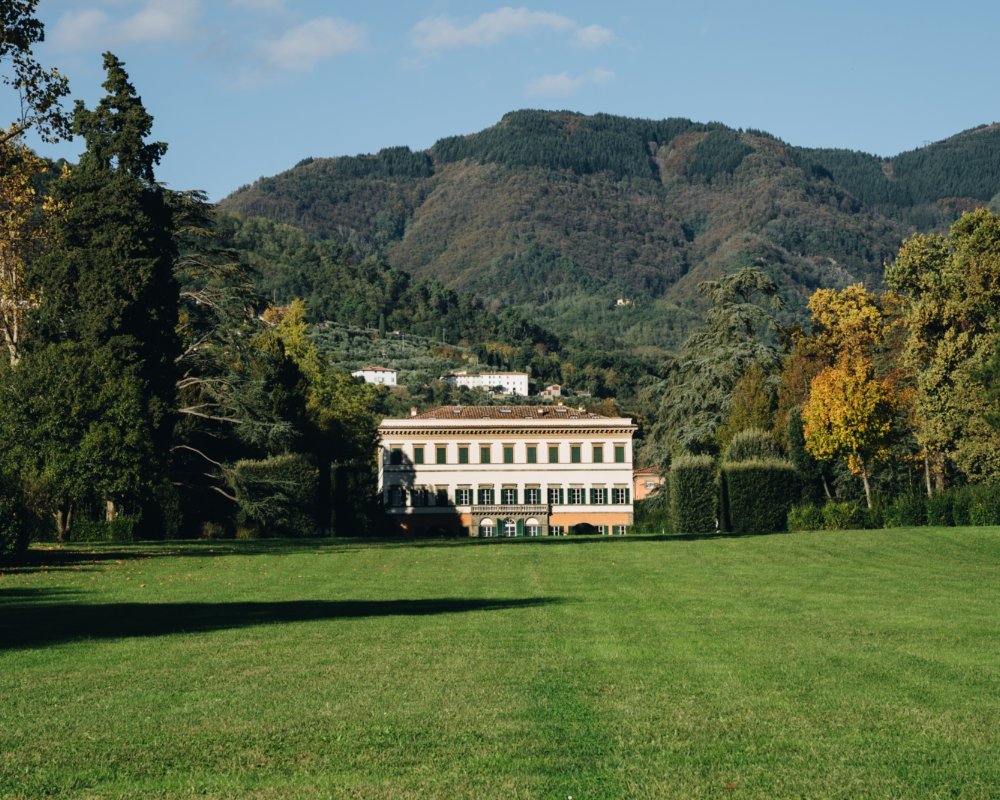Exploring Villa Reale, Villa Grabau and Villa Torrigiani
Life inside the historic walled city of Lucca is renowned for the quintessential quiet, refined Tuscan life visitors dream about. Locals sip drinks in car-free piazzas shaded by the numerous church bell towers in a lively yet calm demeanor that only Italians seem to be able to manage simultaneously. The famous Renaissance era walls encircling Lucca have long been a defining feature of the city which, like many Tuscan cities, sought to protect itself against its neighbors and other invading forces.
Today, however, the walls are more often used for morning runs, afternoon bike rides, and evening strolls before dinner to admire the city and the stunning hills and mountains that surround it. Nestled into these hills just a few kilometers outside the iconic city walls lie some of Lucca’s greatest treasures.
There are countless grandiose Villas within 10km (6 miles) of the city center and offer not only a glimpse into the past, but an opportunity to feel part of it.
We visited three of Lucca’s most famous villas open to the public from spring to fall: Villa Reale, Villa Grabau, and Villa Torrigiani. Each of these three villas are still working, with the owners living there, farmers working the land, and events happening throughout the year. Unlike a museum where you’re meant to look but not touch, at these three magnificent villas, you’re actively encouraged to feel at home in their expansive, curated gardens. Here, history is not a concept of the past, but rather a place where it never left.
In most museums, visitors speak in hushed tones and move cautiously to avoid disturbing other visitors or damaging the art. At Villa Reale’s gardens, you actually become part of the art. During the numerous events such as aperitivi (happy hours), time period costume parties and art exhibitions, you become part of the spectacle and are encouraged to enjoy the grounds in an open and relaxed manner just as royals, famous guests, and owners have done for centuries. In fact, the name Reale means Royal and refers to when Napoleon’s sister Elisa Bonaparte Baciocchi, as Princess of Piombino and Lucca, purchased the Villa and its gardens in 1806.
Upon entering the gates, a sense of calm from the chaotic nature of Italian streets washes over guests, giving them a feeling of serenity and allowing full immersion into the Villa Reale experience. Once inside, guests have full freedom to enjoy the gardens with family and friends or to take a solo stroll through the wooded paths, fountains, and manicured gardens throughout the grounds surrounding the 15th century Villa. Here, you don’t see the past through a glass wall or the lens of a textbook; it’s all around you, begging you to join in the festivities.
In fact, this historic Villa organizes events for the public including picnic style themed aperitivi (happy hours), historical reenactments, and art exhibitions complete with acrobats and children’s art contests. To be able to eat, drink, and relax in the gardens while listening to live music in the shadow of such a magnificent and historic estate is a truly unique experience. So inviting is the hospitality that visitors could be forgiven for forgetting that they are indeed in a living, breathing outdoor museum.
Throughout the grounds are priceless treasures such as the 1920’s era swimming pool where the British Royal Family and Salvador Dalí have cooled off in the Tuscan sun while visiting the area on vacation. Though you can’t swim yourself, you can easily picture the scene of Her Majesty watching over her children as they bask and play on a hot, late summer afternoon. Surrounding the main Villa is a network of ornate gardens, fountains, and grottoes including the Verzura Theater (Europe’s largest natural theater) where the stage, walls, and alcoves are formed from hedges, and the adjacent Lemon garden featuring an enormous fountain depicting the joining of the area’s two main rivers, the Serchio and the Arno. Behind the Villa, next to the 17th century Palazzina dell’Orologio (The Clock House) lies the Teatro d’Acqua, or Water Theater, whose flowing waters and alcoves to be explored face the rear of the Villa. From inside the Villa, on top of the North facing second floor balcony, guests can imagine what it must have been like to awake each morning with a view of this 17th century fountain, framed by the Clock tower and Lucchese hills towering over the property.
In most museums, visitors speak in hushed tones and move cautiously to avoid disturbing other visitors or damaging the art. At Villa Reale’s gardens, you actually become part of the art. During the numerous events such as aperitivi (happy hours), time period costume parties and art exhibitions, you become part of the spectacle and are encouraged to enjoy the grounds in an open and relaxed manner just as royals, famous guests, and owners have done for centuries. In fact, the name Reale means Royal and refers to when Napoleon’s sister Elisa Bonaparte Baciocchi, as Princess of Piombino and Lucca, purchased the Villa and its gardens in 1806.
Upon entering the gates, a sense of calm from the chaotic nature of Italian streets washes over guests, giving them a feeling of serenity and allowing full immersion into the Villa Reale experience. Once inside, guests have full freedom to enjoy the gardens with family and friends or to take a solo stroll through the wooded paths, fountains, and manicured gardens throughout the grounds surrounding the 15th century Villa. Here, you don’t see the past through a glass wall or the lens of a textbook; it’s all around you, begging you to join in the festivities.
In fact, this historic Villa organizes events for the public including picnic style themed aperitivi (happy hours), historical reenactments, and art exhibitions complete with acrobats and children’s art contests. To be able to eat, drink, and relax in the gardens while listening to live music in the shadow of such a magnificent and historic estate is a truly unique experience. So inviting is the hospitality that visitors could be forgiven for forgetting that they are indeed in a living, breathing outdoor museum.
Throughout the grounds are priceless treasures such as the 1920’s era swimming pool where the British Royal Family and Salvador Dalí have cooled off in the Tuscan sun while visiting the area on vacation. Though you can’t swim yourself, you can easily picture the scene of Her Majesty watching over her children as they bask and play on a hot, late summer afternoon. Surrounding the main Villa is a network of ornate gardens, fountains, and grottoes including the Verzura Theater (Europe’s largest natural theater) where the stage, walls, and alcoves are formed from hedges, and the adjacent Lemon garden featuring an enormous fountain depicting the joining of the area’s two main rivers, the Serchio and the Arno. Behind the Villa, next to the 17th century Palazzina dell’Orologio (The Clock House) lies the Teatro d’Acqua, or Water Theater, whose flowing waters and alcoves to be explored face the rear of the Villa. From inside the Villa, on top of the North facing second floor balcony, guests can imagine what it must have been like to awake each morning with a view of this 17th century fountain, framed by the Clock tower and Lucchese hills towering over the property.
Once you’re in the mindset of being part of the Royal experience, you may wonder what the neighbors are up to. Just across the road lies Villa Grabau, another sensory oasis waiting to allure guests with its sense of calm and wonder. Upon entering the wrought iron gates, the majestic Villa Grabau sits framed by sculpted hedges on either side of a long driveway and the Pizzorne Hills towering above the estate.
On first impression, the Villa is reminiscent of Villa Reale with its neoclassical style, which is no surprise given that the two Villas were built in roughly the same time period and were actually owned by the same family from the mid-17th century up to the beginning of the 18th century. What is particularly striking about Villa Grabau is the amount of botanical variety and style of the gardens throughout the grounds. From the inviting English gardens and the Verzura Theater on the Southwest side of the Villa to the Italian Gardens on the North Lawn, the Villa has a unique mix of styles throughout the grounds in a carefully planned manner that never shocks the system, but keeps visitors intrigued and curious to see what is behind each bend. In fact, the botanical gardens are made up of tree species from all over the world, including both local and more exotic trees from as far afield as the Canary Islands and California Desert Fan Palms.
One of the greatest treasures at Villa Grabau, though, are the over 70 antique lemon trees displayed in the terraced Italian Gardens on the South lawn. Each of these trees is held in their original 18th and 19th century terra cotta vases with the coat of arms of the family who commissioned them. Each winter these trees and their massive vases are taken to the Limonaia building through a suggestive forest path where they are kept safe from cold winter temperatures, but can bask in winter sun through the large, arched South facing doors.
Once you’re in the mindset of being part of the Royal experience, you may wonder what the neighbors are up to. Just across the road lies Villa Grabau, another sensory oasis waiting to allure guests with its sense of calm and wonder. Upon entering the wrought iron gates, the majestic Villa Grabau sits framed by sculpted hedges on either side of a long driveway and the Pizzorne Hills towering above the estate.
On first impression, the Villa is reminiscent of Villa Reale with its neoclassical style, which is no surprise given that the two Villas were built in roughly the same time period and were actually owned by the same family from the mid-17th century up to the beginning of the 18th century. What is particularly striking about Villa Grabau is the amount of botanical variety and style of the gardens throughout the grounds. From the inviting English gardens and the Verzura Theater on the Southwest side of the Villa to the Italian Gardens on the North Lawn, the Villa has a unique mix of styles throughout the grounds in a carefully planned manner that never shocks the system, but keeps visitors intrigued and curious to see what is behind each bend. In fact, the botanical gardens are made up of tree species from all over the world, including both local and more exotic trees from as far afield as the Canary Islands and California Desert Fan Palms.
One of the greatest treasures at Villa Grabau, though, are the over 70 antique lemon trees displayed in the terraced Italian Gardens on the South lawn. Each of these trees is held in their original 18th and 19th century terra cotta vases with the coat of arms of the family who commissioned them. Each winter these trees and their massive vases are taken to the Limonaia building through a suggestive forest path where they are kept safe from cold winter temperatures, but can bask in winter sun through the large, arched South facing doors.
The neighboring Villas Grabau and Reale make a fine pair, but their architectural beauty is not the only kind on display in the hills outside the walls of Lucca. Just a couple of kilometers away lies Villa Torrigiani, whose Baroque and Renaissance styles stand out from the other Lucchese Villas. The colorful, ornate Baroque facade takes inspiration from Versailles where one time owner Nicolao Santini was Ambassador of the Republic of Lucca at the Court of Louis XIV. Set against the backdrop of the long, cypress lined drive coming from the South (which is now a park) and the Pizzorne Hills to the North, this Villa is the perfect place to plan an active afternoon. The network of hiking trails heading up into the hills behind the Villa grounds offers marvelous views of the Lucchese plains and is a great activity to combine with a visit to the Villa.
The Villa gardens are also an ideal place for a light stroll with a touch of history thrown in. The secret, sunken Garden of Flora on the east side of the property was constructed specifically for the amusement of Villa guests who would be treated to Giochi d’Acqua (water games) where in hidden fountains would drive guests from the upper terrace of the gardens into the secret sunken Garden of Flora below. Modern day visitors needn’t bring a raincoat, but the Villa has maintained the essence of the Giochi d’Acqua to guide visitors on the same path through an open door in the high stone walls to reveal a perfect framing of the secret garden in the shadows of the towering Grotta dei Venti (the Cave of the Winds), above which sits a statue of the Nymphaeum of Winds, who has watched over the gardens and the Villa and personifies the winds and yearly rebirth.
The gardens wrapping around the back of the Villa include a fishpond and open fields which provide the perfect framing of the late Renaissance architectural style in the back of the building. A visit to the Villa would not be complete without a visit inside, where the original timepieces are kept as they always have since the Villa’s construction. In fact, the family that currently owns the Villa still lives on the upper level, creating an authentic connection to the unique history of the area. Villa Torrigiani is a living, breathing reminder that though the world is in constant evolution, it is continually influenced by events and people of the past.
The neighboring Villas Grabau and Reale make a fine pair, but their architectural beauty is not the only kind on display in the hills outside the walls of Lucca. Just a couple of kilometers away lies Villa Torrigiani, whose Baroque and Renaissance styles stand out from the other Lucchese Villas. The colorful, ornate Baroque facade takes inspiration from Versailles where one time owner Nicolao Santini was Ambassador of the Republic of Lucca at the Court of Louis XIV. Set against the backdrop of the long, cypress lined drive coming from the South (which is now a park) and the Pizzorne Hills to the North, this Villa is the perfect place to plan an active afternoon. The network of hiking trails heading up into the hills behind the Villa grounds offers marvelous views of the Lucchese plains and is a great activity to combine with a visit to the Villa.
The Villa gardens are also an ideal place for a light stroll with a touch of history thrown in. The secret, sunken Garden of Flora on the east side of the property was constructed specifically for the amusement of Villa guests who would be treated to Giochi d’Acqua (water games) where in hidden fountains would drive guests from the upper terrace of the gardens into the secret sunken Garden of Flora below. Modern day visitors needn’t bring a raincoat, but the Villa has maintained the essence of the Giochi d’Acqua to guide visitors on the same path through an open door in the high stone walls to reveal a perfect framing of the secret garden in the shadows of the towering Grotta dei Venti (the Cave of the Winds), above which sits a statue of the Nymphaeum of Winds, who has watched over the gardens and the Villa and personifies the winds and yearly rebirth.
The gardens wrapping around the back of the Villa include a fishpond and open fields which provide the perfect framing of the late Renaissance architectural style in the back of the building. A visit to the Villa would not be complete without a visit inside, where the original timepieces are kept as they always have since the Villa’s construction. In fact, the family that currently owns the Villa still lives on the upper level, creating an authentic connection to the unique history of the area. Villa Torrigiani is a living, breathing reminder that though the world is in constant evolution, it is continually influenced by events and people of the past.

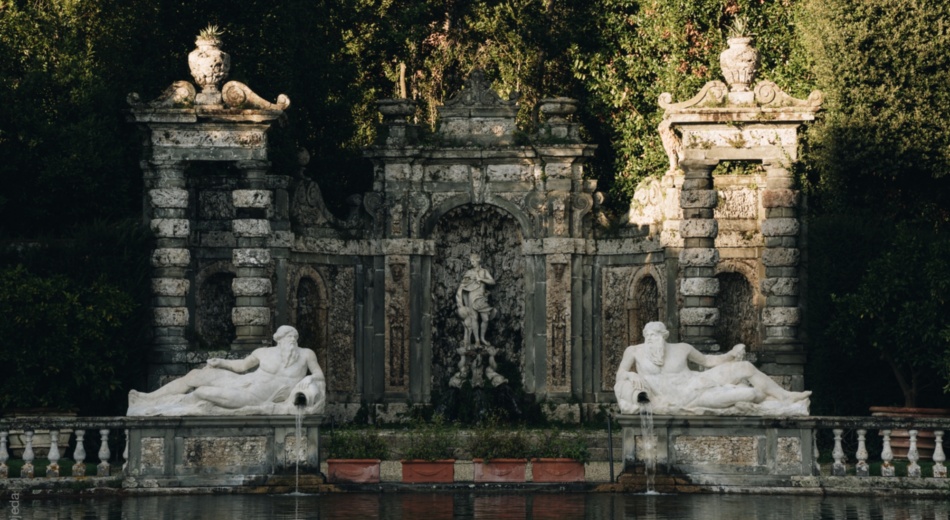
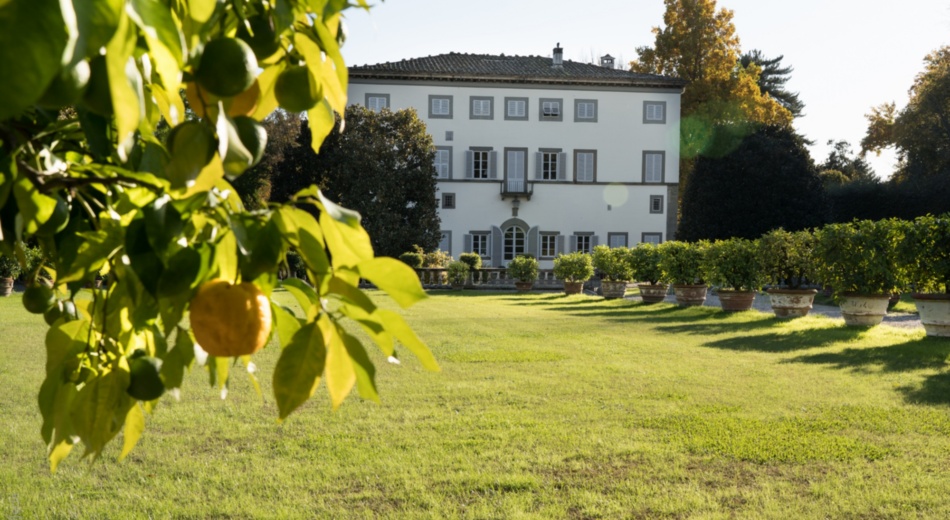
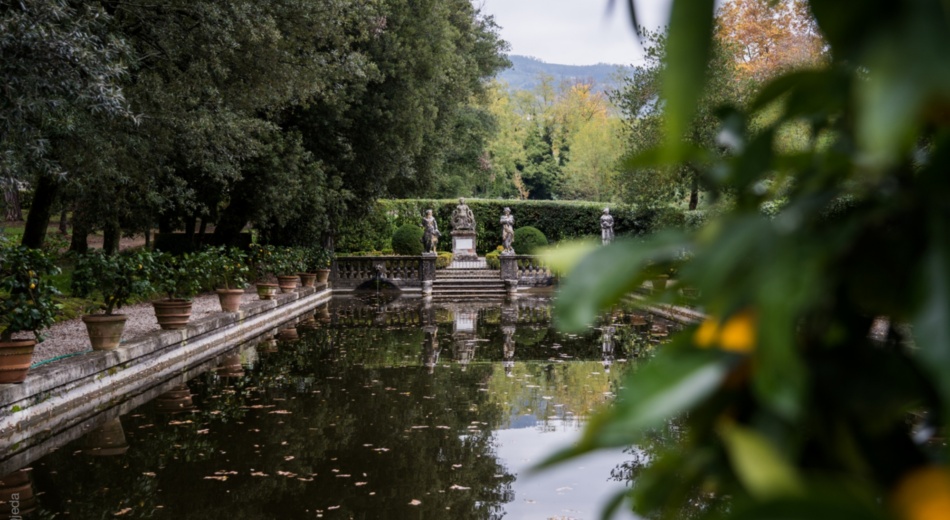
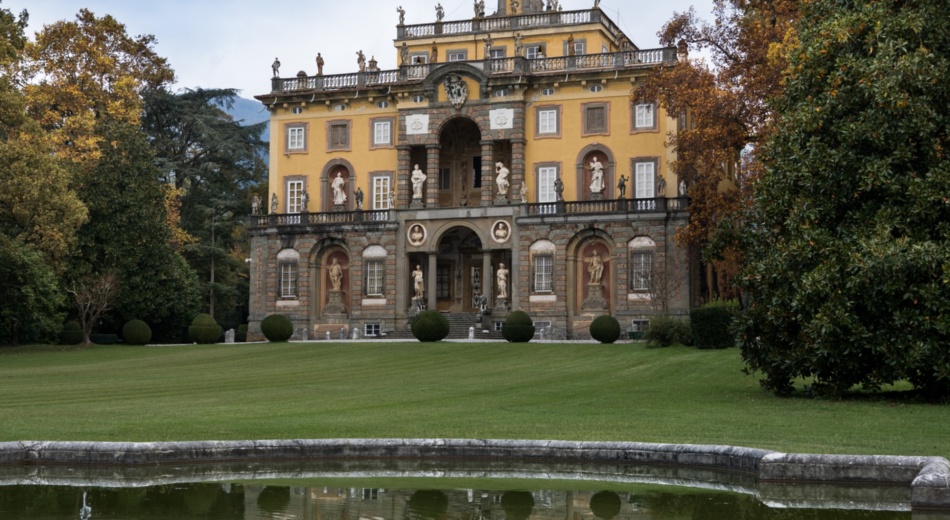
This continual connection to the past in the daily lives of Italians is perhaps one of the most interesting aspects of this beautiful country. No matter where you turn, you are constantly surrounded by history and influenced by traditions passed down for generations.
In this northwestern corner of Tuscany, the chance to go beyond merely seeing the past and to become part of it is just outside the walls of Lucca.
